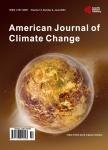Extreme Temperature Trends in the Beninese Niger River Basin (Benin)
Extreme Temperature Trends in the Beninese Niger River Basin (Benin)作者机构:Chaire Internationale de Physique Mathématique et Application (CIPMA—CHAIRE UNESCO) Université d’Abomey-Calavi (UAC) Cotonou Benin Laboratoire de Géoscience de l’Environnement et Application (LaGEA/UNSTIM) Abomey Benin Ecole Nationale Supérieure des Travaux Publics (ENSTP) Université Nationale des Sciences Technologies Ingénierie et Mathématiques (UNSTIM) Abomey Benin Ecole Nationale Supérieure de Génie Mathématique et Modélisation Université Nationale des Sciences Technologies Ingénierie et Mathématiques (UNSTIM) Abomey Benin
出 版 物:《American Journal of Climate Change》 (美国气候变化期刊(英文))
年 卷 期:2021年第10卷第4期
页 面:371-385页
学科分类:07[理学] 070601[理学-气象学] 0706[理学-大气科学]
主 题:Temperatures Extreme Climatic Variations Beninese Niger River Basin
摘 要:In the context of climate change, the study of the variability of the climatic extremes in several regions of the world is of capital importance. This study has as main objective to analyze the variability of extreme temperature events in the Beninese basin of the Niger River for the recent and the near future. To achieve this objective, seven (07) extreme temperature indices based on historical daily temperature observations (1976 to 2019) and REMO RCM simulation outputs of RCP4.5 and RCP8.5 scenarios (2021-2050) were calculated. The obtained results were represented by calculating the means for each index and analyzing the trends and their significance by the Mann-Kendall method. The results show that the indices of extreme temperature intensity (TNn, TXx, and DTR), and those related to the frequency of warm sequences (WSDI, TN90p and TX90p) have experienced a significant increase in the past. This increase will continue until 2050. In contrast, the cold sequence frequency index (CSDI) decrease over the historical period as well as over the future period. These indices show much more change with the RCP8.5 scenario than with the RCP4.5 of the REMO climate model. Only the TXx and CSDI indices show statistically significant changes at all stations.



